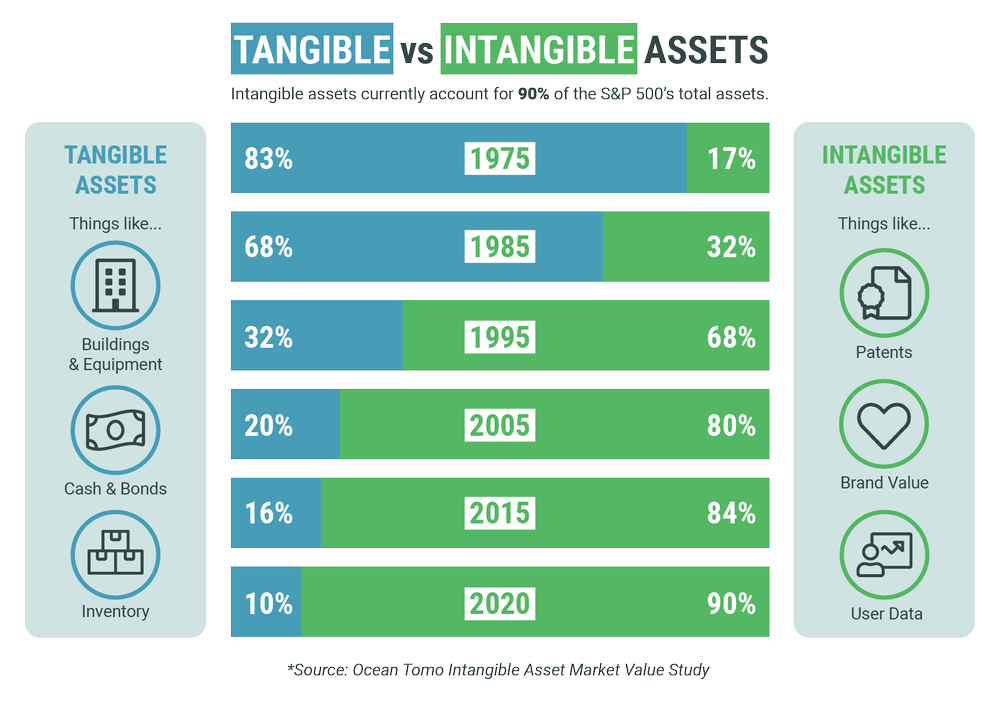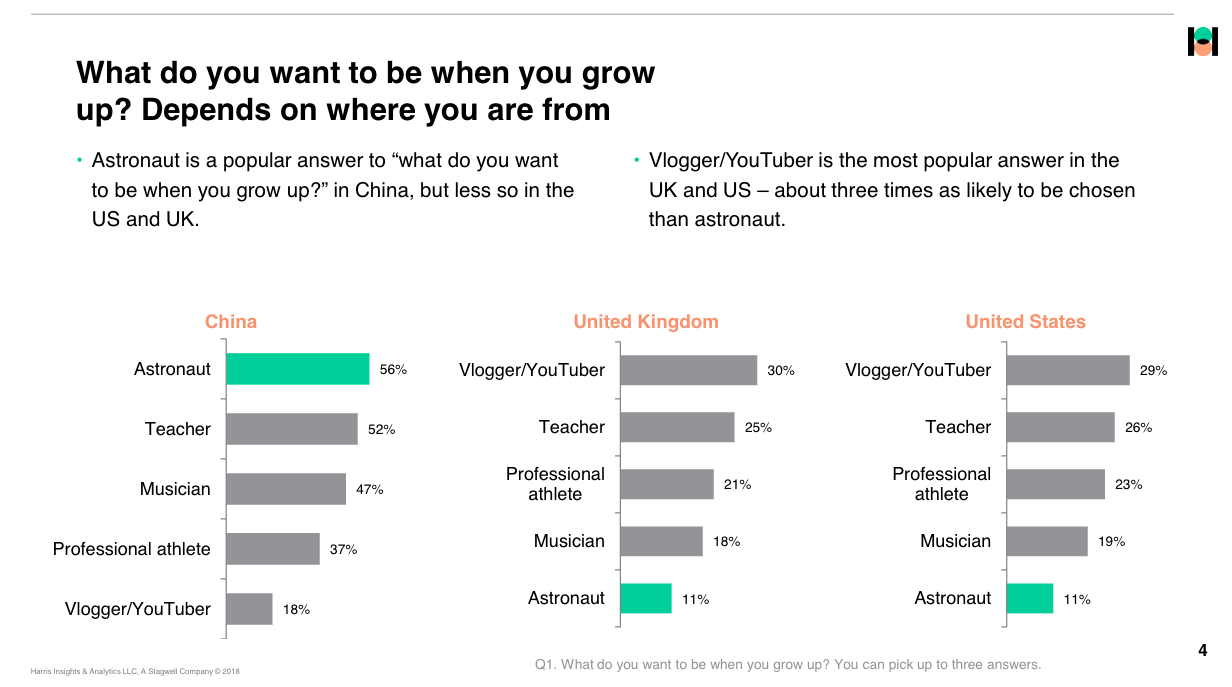In the fast-paced, ever-adapting landscape of modern work environments, one word holds the power to transform organizational dynamics: collaboration. Collaboration is more than just working side-by-side—it’s the synergistic force driving innovation, bridging generational gaps, and turning individual efforts into collective triumphs.
As remote collaboration becomes the norm and knowledge surpasses hard assets in value, understanding the true essence of collaboration and its pivotal role in the modern workplace isn’t just beneficial—it’s essential.
This workplace shift demands adaptive leadership capable of fostering an environment where collaboration isn’t just encouraged—it thrives. Keep reading as we share the transformative power of effective collaboration to bridge generational divides, fuel innovation, and elevate individual contributions into collective victories.
Key Takeaways
Diversity, openness, and respect are the foundations of collaboration.
Transparency will catalyze trust to create open communication.
Developing understanding and emotional intelligence can pave the way for harmonious teamwork.
Leaders must model and explain why collaboration is beneficial to address resistance and eliminate silos.
Adaptive leaders enable collaboration by remaining flexible, responsive, and committed to learning.

What Is Collaboration In The Workplace?
Collaboration in the workplace is about individuals joining forces to accomplish a shared goal; it’s an effort and a mindset that transcends the boundaries of simply working together. It is an effort to prioritize the group over individual achievements.
Embracing ‘Juntos’: The Heart of True Collaboration
When we talk about collaboration in the workplace, we’re delving into a concept much richer than just working alongside one another. The Spanish term “juntos” captures this essence beautifully. While its literal translation is “together”, it conveys a deeper sense of unity, a coming together of individuals for a common cause. It paints a picture of individuals united, not just by a task but also by a shared purpose and vision.
Imagine a group of musicians: individually, they might be skilled with their instruments, but when they play “juntos,” they create a symphony. That’s the depth of collaboration we’re aiming for in our workplaces.
A truly collaborative workplace aims for superior collective outcomes that would be unattainable in isolation.
The Pillars of True Collaboration: Humility, Curiosity, and Mutual Respect
At the core of a collaboration strategy lie three crucial attributes: humility, curiosity, and mutual respect.
1. Humility allows us to acknowledge and appreciate the unique skills and different perspectives others bring. It’s the understanding that we don’t have all the answers and that a group’s ability to share ideas surpasses that of an individual.
2. Curiosity drives us to ask questions, seek understanding, and explore new ways of problem-solving. It encourages continuous learning and makes the collaborative process a journey of seeing the bigger picture.
3. Mutual Respect ensures that every voice is heard and valued. It’s the foundation upon which trust is built, making open and honest communication possible.
To truly collaborate, we must look beyond our individual goals. It requires a unique blend of humility and curiosity, a willingness to set aside personal pride and goals in favor of a superior collective outcome.
Collaborative teams are made up of individuals who recognize that their teammates possess unique skills, experiences, and insights. These specialized understandings are crucial for tackling aspects of a problem that would be impossible to address alone.

HUMAN SKILL PROGRAMS ARE HITTING LIMITATIONS...
- Close the widening gap between learning and on-the-job application
- Overcome the tension of pausing productivity for development opportunities
- Integrate learning so it is actually in the flow of work
- The evolution of human skill development
- What Automated Coaching™ is and how it works.

Why Is Collaboration At Work Important?
As leaders navigate the 21st century, profound shifts in economic models, workflow, generational dynamics, and societal values can challenge our notions of effective teamwork.
Understanding these dynamics is not about a quest for knowledge but a critical endeavor to ensure that the heartbeats of organizations – its people – connect, communicate, and create cohesively on mission.
Below are four imminent trends that underscore the urgency and intricacy of fostering collaboration in today’s workplace:
1. Pivoting Towards Adaptive Leadership
While the benefits of collaboration are tremendous, their actualization often hinges on the leadership in place. Enter adaptive leadership – a dynamic approach that champions flexibility, encourages participative decision-making, and is attuned to the ever-evolving demands of the workplace.
By facilitating an environment where collaboration is not just encouraged but is intrinsic, adaptive leaders amplify each of the benefits, ensuring their organizations remain resilient, innovative, and cohesive.
2. The Knowledge Economy: The Shift from Hard Assets to Knowledge
Today’s global economy, especially in the US, has dramatically transitioned towards a knowledge-based model. This shift is illustrated starkly by the S&P’s value: in just three decades, the percentage of value associated with hard assets plunged from 85% to 8%.
The message is clear: collaboration emerges as the pivotal strategy in an era where knowledge-sharing dominates. It’s comparable to how Kanban and Kaizan revolutionized production processes in the ’80s.
3. Remote Work Dynamics: Navigating Asynchronicity’s Double-Edged Sword
Remote employees and hybrid work models have redefined traditional workplaces. While they offer increased flexibility and potential for multi-tasking, they also pose challenges to collaboration.
The asynchronous nature of hybrid work provides more flexibility, allowing individuals and teams to multi-task more and possibly even be more productive. But this productivity can come at a social cost. With remote teams, our communication becomes much more transactional or said another way – we only connect with others when we need something from them.
This shift risks eroding the crucial elements of trust and psychological safety, which are fundamental for successful collaboration. The absence of spontaneous social connections inherent to in-person workplaces underscores the need to find innovative ways to foster these ties in remote settings.
4. Bridging The Generational Divide
For the first time, we have five distinct generations coexisting in the workforce. The accompanying chart showcases the challenges posed by this diversity. One major hurdle is the digital divide: while one generation are digital natives, having grown up with the internet, others began their careers in a pre-internet era. Addressing this divide is imperative to streamline collaboration across generational lines.
5. Countering Rising Individualism and Divisiveness
In our current society, technology has amplified individualism to an unprecedented scale. A 2019 Harris poll revealed the aspiration of “influencer” tops the career choices of American and British youth, surpassing professions like teaching and sports.
*Results of the Harris Poll survey.
This celebration of individualism and prevalent divisiveness pose a potential barrier to collaboration. As workplaces, there’s a pressing need to cultivate a culture that values collective achievements over individual accolades.

The Cascading Rewards: 3 Benefits of Workplace Collaboration
In the multifaceted ecosystem of the workplace, collaboration is the undercurrent that propels teams to generate value far beyond the sum of individual efforts. There are three foundational benefits of nurturing collaboration throughout the entire team.
1. Better, More Informed Decisions
Decisions formed through collaboration are like diamonds formed under pressure: they become multi-faceted, leading to more well-rounded and comprehensive solutions.
When minds converge to share knowledge, perspectives can intermingle, paving the way for holistic and precise decisions. By avoiding a singular viewpoint, teams can leverage diverse experiences and skills to ensure that choices are well-rounded.
2. Acceleration Of Innovation
The bridge between a good idea and a groundbreaking one is often a shared thought, an improvised solution, or a collective brainstorming session. Collaboration, in essence, becomes the petri dish where creativity meets possibility.
3. Forging a Unified Organizational Culture
It will build trust when individuals collectively tackle challenges, celebrate achievements, and learn from setbacks. A shared journey among teammates can cultivate a culture where mutual respect thrives and individuals celebrate team collaboration.
Unlocking the Power of Your Team: Six Principles of Effective Collaboration
While the significance of collaboration has become universally acknowledged, the actual blueprint for successful collaborative efforts is a mystery for some. However, after observation and experience, there are six quintessential principles that help catalyze collaborative work:
1. Valuing Diversity in Thoughts and Actions
When bound by mutual respect, diverse teams inevitably yield the most innovative solutions. Take my dynamic with my cofounder, Kirsten, as an example. She likes to gather as much input as possible, ever eager to source as many perspectives as possible. Conversely, I prioritize swift decision-making to remove barriers for my team, empowering them to progress. While these approaches might seem at odds, we both value each other’s perspective on the balance between speed and quality, usually arriving at timely and quality decisions.
2. Nurturing Openness and Curiosity For New Ideas
The term “growth mindset” has become somewhat of a catchphrase in recent years, but its essence remains pivotal. Collaboration thrives when people enter the arena with open minds, unburdened by rigid beliefs or personal agendas. Promising projects can derail because one team member can’t look beyond their preconceived notions, leaving others disenchanted.
3. Self-Awareness in The Workplace: A Collaboration Compass
Understanding your natural tendencies and those of your teammates can go a long way toward adjusting and adapting your style to the needs of the collaborative activity. Soft skills help teammates avoid common interpersonal problems, such as making assumptions about motivations or behaviors, to get the most out of one another for the best outcomes.
4. Adaptability in an Ever-Changing Landscape
The speed at which organizations, industries, and societies at large evolve is constantly increasing. These conditions make it extremely important that we know how to be adaptive, which entails performing well in the face of unpredictable and constantly changing environments.
To embrace adaptivity means comfortably pivoting when needed, responding quickly to change, and embracing the new direction. Those who can go with the flow and embrace constant change will thrive, while those who don’t will be frustrated and passed by.
For more on this, read: The Future Workplace Experience: 7 Trends Shaping A New Environment
5. Transparency: The Trust Builder
Trust is a key currency of collaboration. It is the grease that makes the gears turn. When operating in a trusting environment, we feel comfortable sharing and being vulnerable with others. We speak up, take chances, ask questions, and admit mistakes. Transparency is the fundamental building block that creates this sense of trust. If we are guarded and secretive, it allows others to make assumptions about the motivations behind our decisions.
6. Empathy and Emotional Support: Beyond the Professional Facade
We spend half of our waking hours with our colleagues. It is no surprise that these relationships are extremely important to our well-being. To assume that our non-work relationships are our only supportive systems is wishful thinking. Whether we mean to or not, we’re embedded in emotionally-involved relationships with colleagues. Teams that embrace this recognition and handle it with care will be more likely to increase the effectiveness of our collaboration.
In weaving together these principles, any organization can develop collaboration skills into a potent strategy for creating clear goals, increasing employee engagement, and improving retention.

How To Demonstrate Collaboration in the Workplace: A Guide for Leaders and Employees
How can leaders and employees move from understanding the importance of a collaborative environment to actively practicing it? This guide will provide you with actionable steps to demonstrate and encourage collaboration in the workplace.
1. Facilitate Open Communication
For Leaders: Imagine a workspace where employees aren’t just clocking hours but are passionately contributing, where every idea is valued, and every concern addressed. To shape this environment, leaders must champion a culture of inclusivity where people have a voice. This entails the opportunity for teams to discuss ideas openly and assurance that their feedback won’t result in negative consequences.
For Employees: Being part of a collaborative workspace is about more than just doing one’s job. It’s about engaging in meaningful conversations, seeking understanding when tasks are ambiguous, and valuing the perspectives of colleagues. This means taking the initiative to share insights during team meetings, asking clarifying questions when in doubt, and embracing feedback as a tool for personal growth rather than criticism.
2. Practice Active Listening
For Leaders: Envision a team meeting where every spoken word holds weight and importance. As a leader, your role is not just to advise but also to absorb. When team members share, it’s an act of trust. By leaning in, giving undivided attention, and reflecting back on their sentiments with empathy, you send a clear message: every voice matters.
For Employees: Picture yourself in a conversation where you’re hanging onto every word, not because you’re waiting for your turn to speak, but because you genuinely want to understand the narrative unfolding. This kind of listening goes beyond just hearing; it’s about immersing oneself in what others are sharing, sidelining any urge to interject.
3. Foster Diversity Within Teams
For Leaders: Diversity is an operational advantage. Drawing from varied perspectives and experiences can lead to more innovative solutions. Prioritize creating teams that reflect a broad range of backgrounds and skill sets.
For Employees: Everyone brings something unique to the table. By valuing and actively seeking insights from colleagues with different backgrounds and expertise, you better contribute to reaching team goals.
4. Share Goals & Vision
For Leaders: Outlining the company’s vision is more than setting a target—it’s about creating a clear roadmap for reaching a common goal. By openly sharing these plans, leaders can provide teams with clarity on the milestones ahead and how their roles contribute to reaching them.
For Employees: Consider your personal goals as key markers on this roadmap. By ensuring they are in sync with the team’s objectives, each task you undertake drives your progress and advances the organization’s collective mission.
5. Encourage Cross-functional Projects
For Leaders: Instead of thinking in isolated compartments, envision your organization as a network where each component strengthens the other. Initiate projects that intertwine different skills, allowing a seamless flow of ideas and expertise across the company.
For Employees: When tasked with cross-departmental projects, visualize it as an avenue for widening your knowledge and horizons. Engage with peers from different departments, absorb insights from their expertise, and fuse them with your own to enrich the project’s outcome.
6. Leverage Tools To Support Teamwork
For Leaders: Select tools that empower your teams to engage in collaborative work in real-time.
For Employees: Utilize the tools not just as a means to an end but as an intentional way to foster connections, share inspirations, and effectively communicate.
7. Recognize and Reward Collaborative Efforts
For Leaders: Move beyond generic praise. Pinpoint moments where collaboration shines brightly, and illuminate those moments with specific recognition. When teams witness their collective efforts being celebrated, it reinforces the value of the entire team in achieving success.
For Employees: When celebrated for success, always acknowledge your colleagues’ efforts. By highlighting the collective nature of accomplishments, you strengthen team unity and set the stage for more collaboration in the future.
5 Common Barriers To Effective Collaboration At Work
While collaboration stands as a pillar of productivity and innovation, it isn’t without its hurdles. Identifying barriers is the first step to ensuring seamless teamwork. By understanding the underlying causes that hinder collaboration, organizations can proactively address and overcome them.

1. Lack of Clear Communication
Barrier: Misunderstandings can stem from vague instructions, lack of feedback, or insufficient sharing of information.
Overcome: Establish regular check-ins for clarification and training on clear communication. Proactively ask questions, practice employee listening, offer feedback, and consistently document and share information with collaboration tools.
2. Mismatched Goals and Priorities
Barrier: Different teams or individuals may have conflicting objectives.
Overcome: Initiate conversations to collaboratively define mutual objectives, ensuring that all team members understand the broader organizational goals and how their tasks intersect and support one another.
3. Resistance to Change
Barrier: People can be set in their ways and resistant to new methods or tools.
Overcome: Provide workshops or training sessions to share “the why” and benefits. Create a feedback loop where team members can voice concerns and suggest improvements.
4. Lack of Trust
Barrier: A history of unresolved conflicts or competitiveness can erode trust.
Overcome: Focus on building relationships and communicating quickly. Oftentimes, confusion arises simply from a lack of understanding of each other’s unique motivations and ways of thinking.
5. Siloed Departments
Barrier: Teams or departments may become isolated, leading to a lack of collaboration.
Overcome: Encourage cross-functional projects and open-door policies to bridge gaps between departments.
True collaboration is the backbone of any thriving organization. It’s not enough to spot barriers; proactive intervention is key. Drawing on the qualities of successful collaboration not only provides a direction but also strengthens an organization’s foundation.
Remember, a unified approach not only enhances productivity but also fosters a workplace culture where every voice has the potential to drive innovation.
Conclusion: Creating a Collaborative Company Culture
Collaboration isn’t merely a buzzword for contemporary workplaces; it’s a fundamental shift in how we think, create, and grow together. As we’ve explored, the manifold benefits of collaboration — from driving innovation to fostering a united organizational culture — are crucial in today’s environment.
For leaders, the challenge is twofold: foster an environment conducive to collaboration and embody the principles of adaptive leadership. This approach, which values flexibility, responsiveness, and a willingness to learn, is the linchpin in creating a truly collaborative culture.












